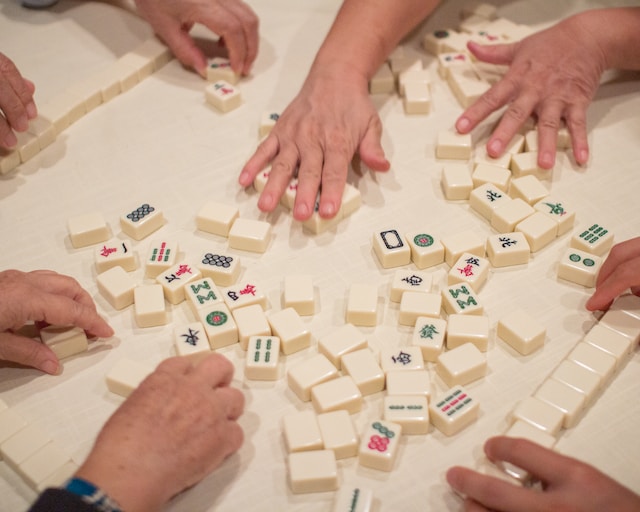
Mahjong is a traditional Chinese tile-based game that has gained international popularity. It is a game of skill, strategy, and luck, played with a set of tiles by four players. This guide aims to provide you with a step-by-step explanation of the rules, gameplay, and strategies involved in playing Mahjong. I. The Mahjong Set: Tiles: A standard Mahjong set consists of 144 tiles, divided into three main categories: suits, honors, and flowers. a. Suits: There are three suits: dots, bams (bamboos), and cracks (characters). Each suit has tiles numbered from one to nine. b. Honors: The honors category includes Winds (East, South, West, North) and Dragons (Red, Green, and White). c. Flowers: Some sets include flower tiles, which are not used in the gameplay but have significance in scoring. Equipment: You will need a table, four chairs, and a rack for each player to hold their tiles.
II. Setup: Players: Gather a group of four players. The game is typically played with friends or family members. Tiles: a. Mix the tiles face down on the table and build them into a square wall, two tiles high and eighteen tiles long on each side. b. Players take turns rolling dice to determine the starting point on the wall from which tiles will be drawn. Dealing: a. Starting with the East player and moving counterclockwise, each player receives 13 tiles from the wall. b. The East player begins their turn.
III. Gameplay: Turns: a. Each turn consists of drawing a tile and then discarding one tile face-up on the table. b. Players can choose to either draw the next tile from the wall or claim a discarded tile from another player to complete a set. Sets: a. Pung: A set of three identical tiles. b. Kong: A set of four identical tiles. c. Chow: A sequence of three tiles from the same suit. d. Pair: Two identical tiles. Winning: a. The objective is to complete a hand by forming sets and a pair, resulting in a winning hand or "Mahjong." b. A winning hand should consist of four sets and a pair (or special hands with specific combinations). c. Declare "Mahjong" by completing your hand and revealing it to the other players. Scoring: a. Scoring systems vary, but generally, points are awarded based on the value of the sets and specific combinations in a player's hand.
IV. Strategy Tips: Familiarize Yourself with the Tiles: a. Recognizing different tiles and their patterns will help you plan your moves and anticipate opponents' strategies. Observe Discards: a. Pay attention to the tiles discarded by other players to determine which suits they are focusing on and adjust your strategy accordingly. Balance Defense and Offense: a. Strive to maintain a balance between building your hand and preventing opponents from winning. Plan Ahead: a. Consider possible combinations and future moves while deciding which tiles to keep or discard.
Conclusion: Mahjong is a captivating and strategic game that offers hours of entertainment. With this guide, you should have a solid understanding of the rules, gameplay, and basic strategies involved. Remember, practice and experience will enhance your skills as you delve deeper into the fascinating world of Mahjong. Enjoy the game and good luck!
Check out our medieval Castles blog